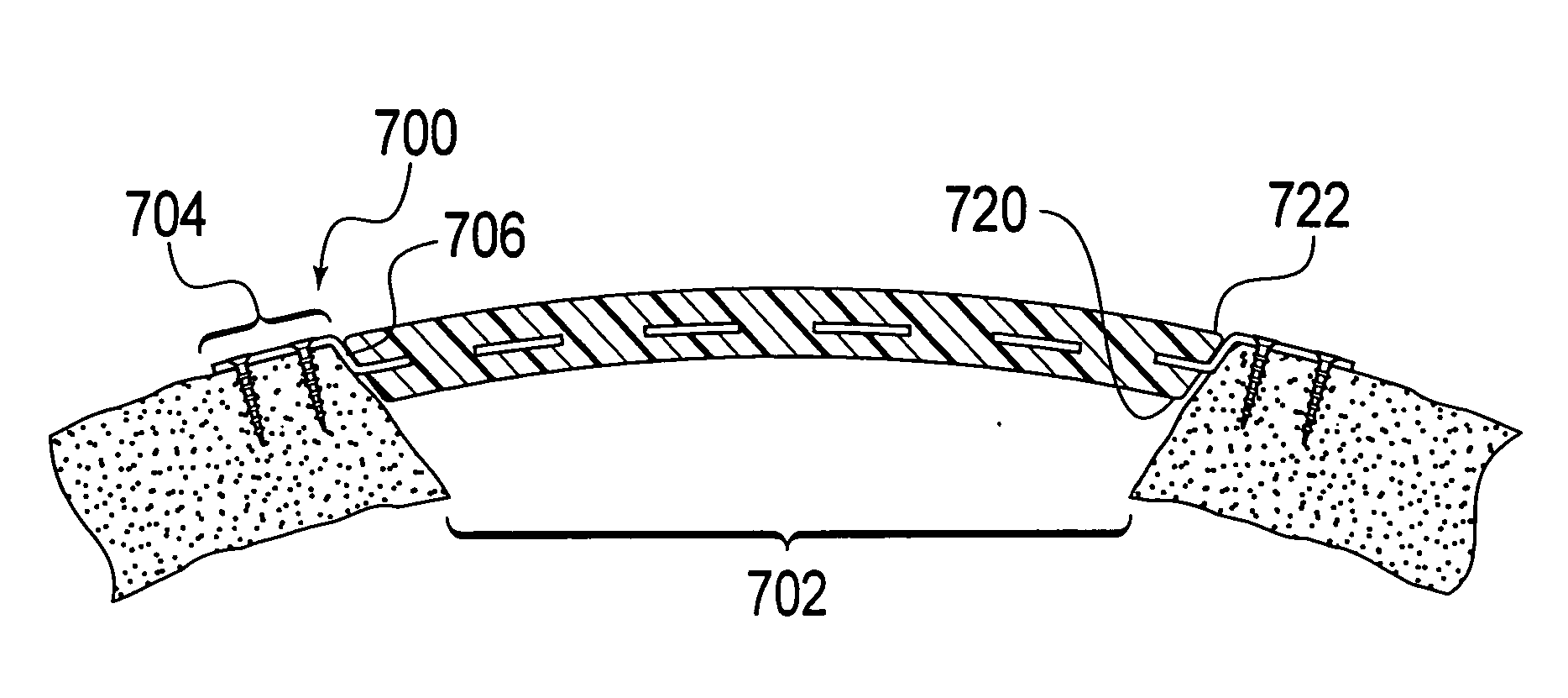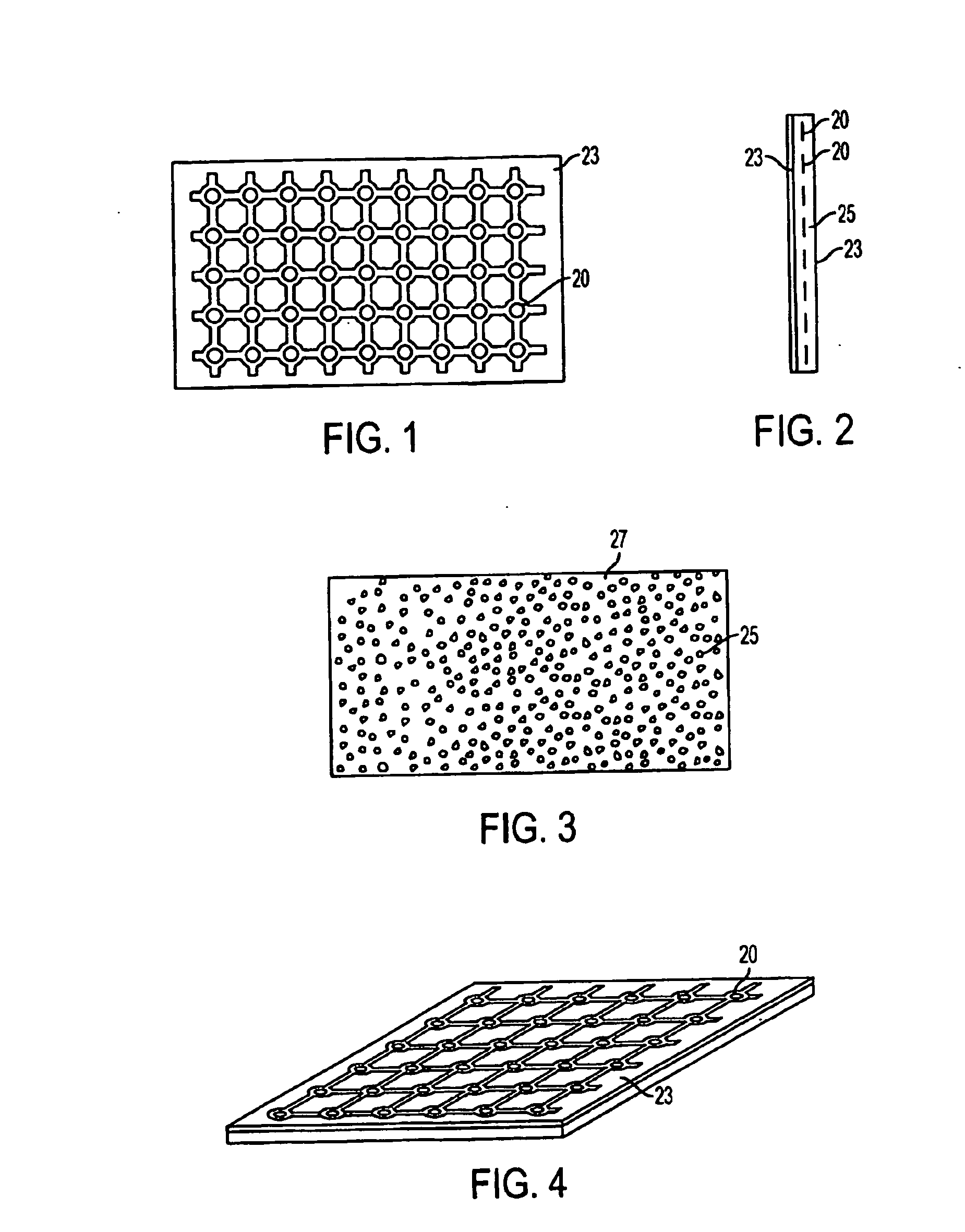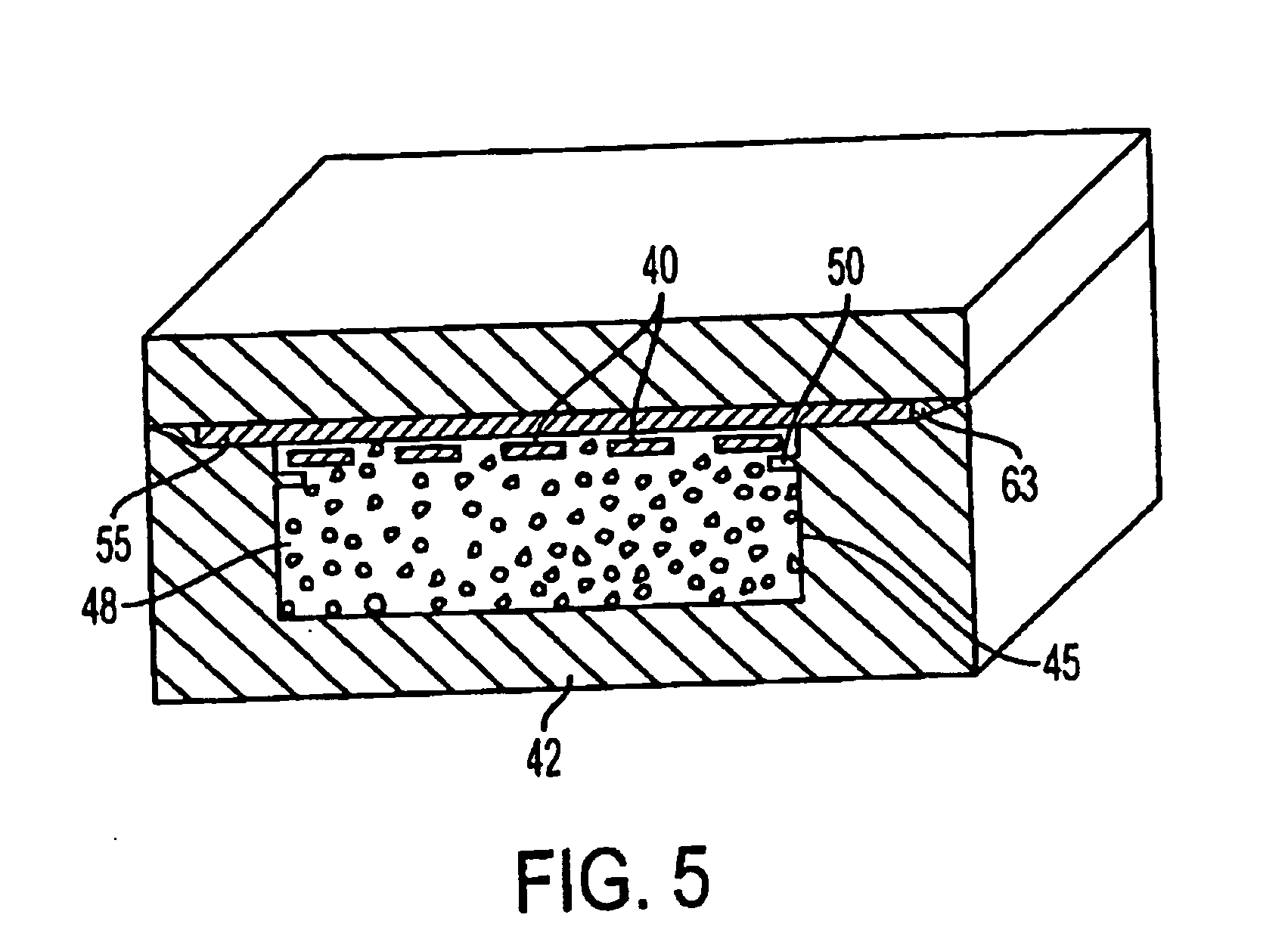Craniofacial implant
a technology of craniofacial implants and implants, which is applied in the field of craniofacial implants, can solve the problems of difficult internal bone repair and fixation problems, cancer, resection, or congenital defects, and the craniofacial and especially orbital wall and floor defects, etc., and achieve the effect of reducing the risk of fracture, re-shaping or ben
- Summary
- Abstract
- Description
- Claims
- Application Information
AI Technical Summary
Benefits of technology
Problems solved by technology
Method used
Image
Examples
Embodiment Construction
[0042] The present invention is directed to novel implants for craniofacial surgery, methods for making said implant, and methods of reconstructing orbital and cranial defects with the implants described. As described herein, one preferred application for the implant is for the reconstruction of orbital defects that may have resulted from trauma or disease or birth defects. Other craniofacial and cranial applications are also contemplated. The implants preferably have a mesh portion that is coated or covered with a smooth (or barrier) sheet on both sides of the mesh, a porous sheet on both sides of the mesh, or a smooth (or barrier) sheet on one side of the mesh and a porous sheet on the other side of the mesh.
[0043] A first embodiment of the invention comprises a sheet of mesh with a porous layer formed in the interstices of the mesh and at least partially or completely covering the bottom surface of the implant, and a solid sheet of film covering the top side of the implant. This...
PUM
| Property | Measurement | Unit |
|---|---|---|
| pore sizes | aaaaa | aaaaa |
| thick | aaaaa | aaaaa |
| thick | aaaaa | aaaaa |
Abstract
Description
Claims
Application Information
 Login to View More
Login to View More - R&D
- Intellectual Property
- Life Sciences
- Materials
- Tech Scout
- Unparalleled Data Quality
- Higher Quality Content
- 60% Fewer Hallucinations
Browse by: Latest US Patents, China's latest patents, Technical Efficacy Thesaurus, Application Domain, Technology Topic, Popular Technical Reports.
© 2025 PatSnap. All rights reserved.Legal|Privacy policy|Modern Slavery Act Transparency Statement|Sitemap|About US| Contact US: help@patsnap.com



